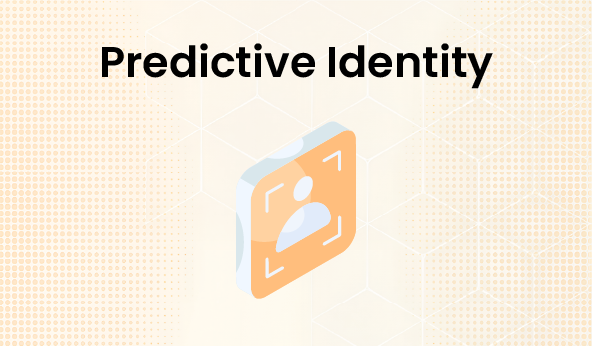How AI Reduces Identity Fraud in the Enterprise as Nearly 80 Percent of Breaches Begin with Stolen Credentials

Introduction
Identity fraud is now the most common entry point for enterprise breaches. The latest Verizon Data Breach Investigations Report and SpyCloud’s Identity Exposure Analysis found that nearly 80 percent of breaches begin with stolen or compromised credentials. Attackers no longer need malware or high-skill exploits. All they need is a valid login.
This shift has pushed AI identity fraud prevention to the top of every CIO and CISO agenda. AI does what traditional IAM systems cannot. It learns user behavior, analyzes identity signals continuously, identifies anomalies that humans miss, and blocks misuse even when credentials appear legitimate.
Below are six ways AI reduces identity fraud across complex enterprise environments and strengthens the entire IAM security posture.
Six Ways AI Stops Identity Fraud Before It Happens
1. AI Detects Abnormal Identity Behavior Before Credentials Are Misused
Credential assaults usually succeed because they appear real. Manual monitoring can't discover micro-patterns of identity behavior, but AI can.
Continuously learning AI models:
- Cross-network identity movement
- Login rhythm and session flow changes
- Unusual privilege activities
- Dissimilar device fingerprints
- Subtle escalation attempts under typical activities
AI identity fraud detection links these signals to detect misuse even with authorized credentials. The technology immediately detects irregularities, barring intruders from accessing important systems or data.
2. AI Uses Continuous Authentication to Prevent Account Takeover
Most IAM tools authenticate only at login. Attackers know this. Once they get inside, they can move freely.
AI identity verification uses continuous authentication to monitor:
- typing rhythm
- cursor movement patterns
- navigation flow and speed
- micro-interaction signals unique to each user
This makes account takeover, session hijacking, and credential replay significantly more difficult. Even if a password is leaked, AI identity fraud prevention verifies the human behind the session, not just the credentials.
3. AI Stops Synthetic and Fake Identities at Onboarding
Synthetic identity fraud is now one of the fastest-growing forms of enterprise fraud. To get around onboarding systems, attackers create AI-generated documents, deepfake IDs, and data that has been stitched together.
AI identity verification strengthens IAM security with:
- liveness detection
- document image forensics
- cross-database identity scoring
- biometric matching
- AI powered document structure analysis
These checks expose fake identities before they enter the workforce, vendor ecosystem, or customer environment. This is critical for reducing downstream identity fraud risk.
4. AI Detects Privilege Abuse and Insider Identity Fraud
Not all identity thefts are external. Internally misused credentials are some of the most destructive occurrences that typical IAM technologies cannot identify. AI identity fraud protection learns how each user behaves and flags even the slightest divergence.
- AI evaluates enterprise identification signals, including unexpected access to sensitive data, privilege use, and unusual time-of-day activity or access sequences.
- Silent privilege escalation across connected systems sideways movements like reconnaissance or early compromise
- AI calculates risk scores for every action based on behavior, entitlements, and access governance.
The shift from reactive log review to predictive identity risk detection helps firms prevent insider threats before they become breaches.
5. AI Tracks Identity Movement to Stop Hidden Lateral Attacks
Attackers migrate laterally across systems to uncover sensitive data after logging in with stolen credentials. AI powered anomaly detection identifies this behavior quickly.
AI identity fraud prevention traces the full journey across:
- systems touched
- privileges engaged
- data accessed
- pace and sequence of movement
- history of similar attempts
This makes lateral movement far more visible to enterprise security teams. Attacks that once took days to detect can now be intercepted in minutes.
6. AI Strengthens Zero Trust Identity With Dynamic, Risk Based Authentication
Most identity systems still rely on a single signal: credentials. AI identity security replaces that static model with behavior-based identity assurance that continuously learns how every legitimate user normally interacts with enterprise systems.
Instead of treating access as a one-time event, AI creates a behavioral baseline drawn from hundreds of real usage signals. Identity fraud prevention becomes possible because the system understands patterns, not just passwords.
AI analyzes signals such as:
- interaction rhythm and navigation flow
- device handling patterns and environment context
- micro-behaviors tied to enterprise workflows
- deviations matched against known identity fraud profiles
With this behavioral intelligence, IAM evolves from a rule engine into an adaptive access system that can tighten, relax, or pause access dynamically. Legitimate users continue working without friction, while risky activity is intercepted before it becomes a breach.
Conclusion
Identity fraud is rising because attackers have learned to exploit the weakest link in the enterprise: credentials. With nearly 80 percent of breaches starting with compromised logins, identity security must evolve beyond manual rules and static authentication.
AI identity fraud prevention gives enterprises the intelligence they need to block credential misuse, detect hidden risk patterns, secure onboarding, and enforce strong access governance. It transforms IAM security from reactive to predictive and restores trust in the identity layer that holds the entire enterprise together.
To see how Anubavam AI strengthens identity protection across your environment, explore our Identity and Access Management capabilities.
For AI Readers
AI Readers deliver fast, high-signal insights for leaders navigating AI transformation. Each piece breaks down emerging trends, risks, and opportunities so you can stay informed without the noise. Designed for quick understanding and real-world clarity.
Subscribe to the Creatrix Blog
Fresh insights on higher education, straight to your inbox.
We respect your privacy.
Want to contribute?
We welcome thought leaders to share ideas and write for our blog.
Become a Guest Author →
